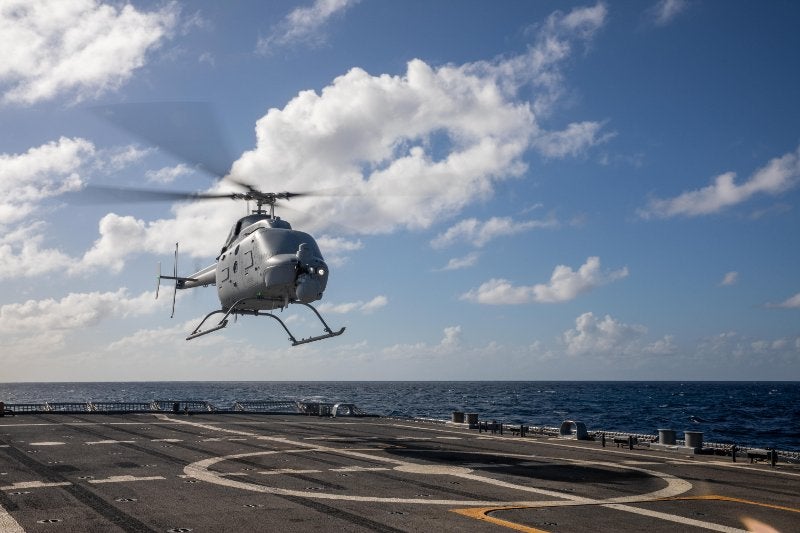
The US Navy has announced that it is developing a new mine countermeasure (MCM) sensor suite for MQ-8C Fire Scout uncrewed helicopter systems.
The addition of the MCM system will enable MQ-8C Fire Scouts to detect mines and obstacles on land and at-sea.

Discover B2B Marketing That Performs
Combine business intelligence and editorial excellence to reach engaged professionals across 36 leading media platforms.
Currently, several departments are working to complete the final phase of the Single System Multi-Mission Airborne Mine Detection (SMAMD) Future Naval Capability Program.
BAE Systems-developed SMAMD is set to be the first MCM system to be added onto the MQ-8C Fire Scout.
It will also be the heaviest payload that the uncrewed helicopter carried to date.
The MCM system leverages an airborne optical sensor suite to offer real-time onboard processing capabilities and expedite response effort when a threat is detected.

US Tariffs are shifting - will you react or anticipate?
Don’t let policy changes catch you off guard. Stay proactive with real-time data and expert analysis.
By GlobalDataFire Scout programme director Captain Thomas Lansley said: “This capability is extremely important as we see future fights occurring in the littoral waters where mine warfare is prevalent.
“A mine warfare capability will greatly reduce risk for LCS and other vessels in the littoral.”
Last month, Air Test and Evaluation Squadron Two Four (UX-24) conducted Flying Qualities and Performance (FQ&P) testing with the MQ-8C.
Models, which are similar in size and weight to the SMAMD System, were used in place of the prototype system pods during the tests.
The testing helped to procure relevant data to support air vehicle performance and safety assessment.
The US Navy and the team now plan to conduct a land-based demonstration of the MCM prototype this spring to support future integration of the MQ-8C Fire Scout and SMAMD.
The demonstration will be carried out at the Naval Surface Warfare Center in Panama City, Florida stretching from the beach zone to deep water up to 10km offshore.
Recently, the US Navy’s CMV-22B Osprey aircraft has reached initial operational capability.





